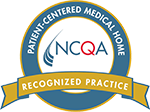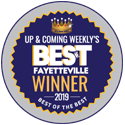Critical Tools for Parents in Bullying Prevention
Sara’s parents were happy that she was doing so well in her new school. Each day Sara came home and told them about the new friends she made and that she was happy. Then Sara stopped talking about school. She stopped talking about her friends. She stopped sharing news about her day. Concerned, her parents began making more direct inquiries into what was going on and learned that another child was calling her names and other kids were starting to join in. The discomfort this created caused Sara to start eating her lunch in the library where she could avoid the kids who were giving her trouble.
Too many kids today are having issues with the widespread problem of bullying. Adolescence is a challenging time for kids without the added pressure of bullying. The psychological effects of bullying can leave deep emotional scars. Depression, anxiety and low self-esteem can occur following bullying. It is critical for parents to get involved and stay involved to help put an end to bullying. Here are three tools every parent should have for preventing and addressing bullying.
Identify Bullying
Bullying has changed over the years, and it is critical that parents understand what bullying is and what it isn’t so they can respond appropriately. A little friendly teasing is normal and is okay if both parties are playful about it. Both parties should also find the teasing to be humorous. Teasing becomes bullying when what is said is harassing, hurtful or repetitive. People use bullying as a way to have power over another person. This power can be physical, verbal or social.
- Verbal bullying can be unkind words spoken or written about another person.
- Social bullying involves hurting someone’s relationships or social standing. This can include spreading rumors, telling someone not to be friends with another person, or embarrassing someone.
- Physical bullying involves hurting someone physically or harming their possessions.
If bullying is identified, respond quickly and consistently to send the clear message that the behavior is not acceptable.
Understand the Cause for Bullying
Communication is a significant first step in addressing bullying. If your child was bullied or if you suspect bullying, try to find out as much information as possible about what happened, when it started and where it happened. If it has occurred more than once, find out how often the bullying occurs. Having as much information as possible will help in informing the school or other officials about the situation so it can be appropriately addressed.
Talk to Kids About Bullying
Teaching kids about bullying should start at a young age. Model the behavior you want to see in them. Kids who understand bullying are better able to identify it when it is happening. Talking to kids early also helps reinforce how to safely and effectively address bullying if and when it happens. Teach kids not to be bystanders to bullying. If they see someone being bullied, teach them to take a positive stance against it. Being an “upstander” can make a significant impact in the life of the child being bullied. Here is an excellent video on being an upstander to bullying that is perfect for both parents and kids:
Your child’s physical and mental health is of significant importance to the team at Rainbow Pediatrics. If you have questions or concerns about your child, please schedule an appointment with one of our pediatric providers. We are here to support you both.








